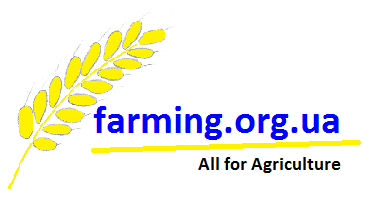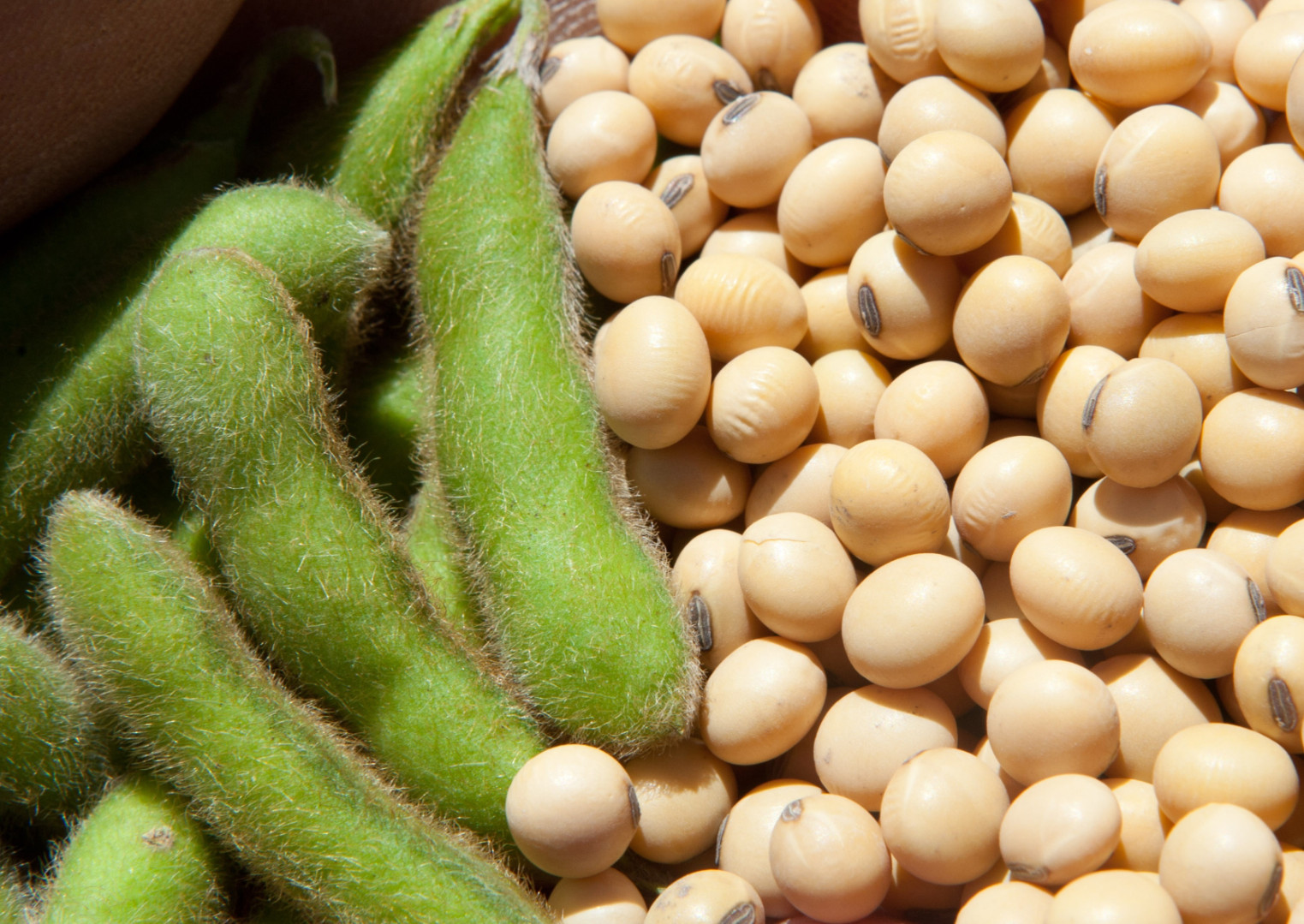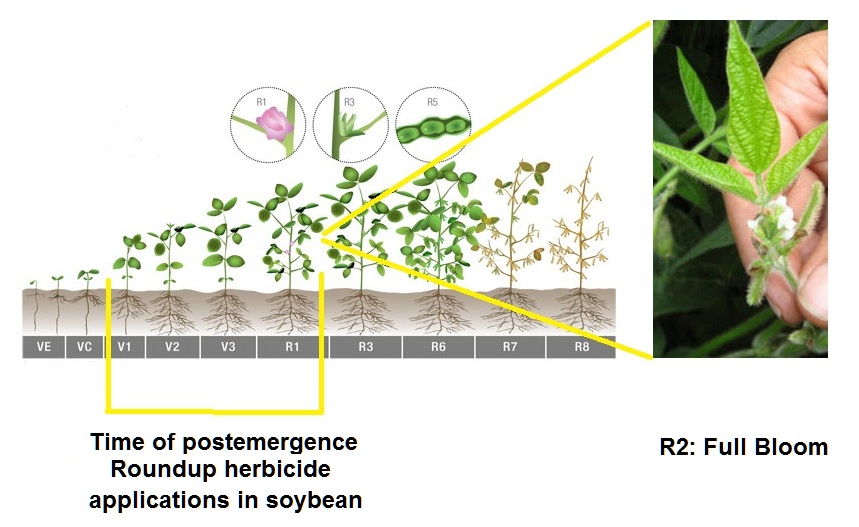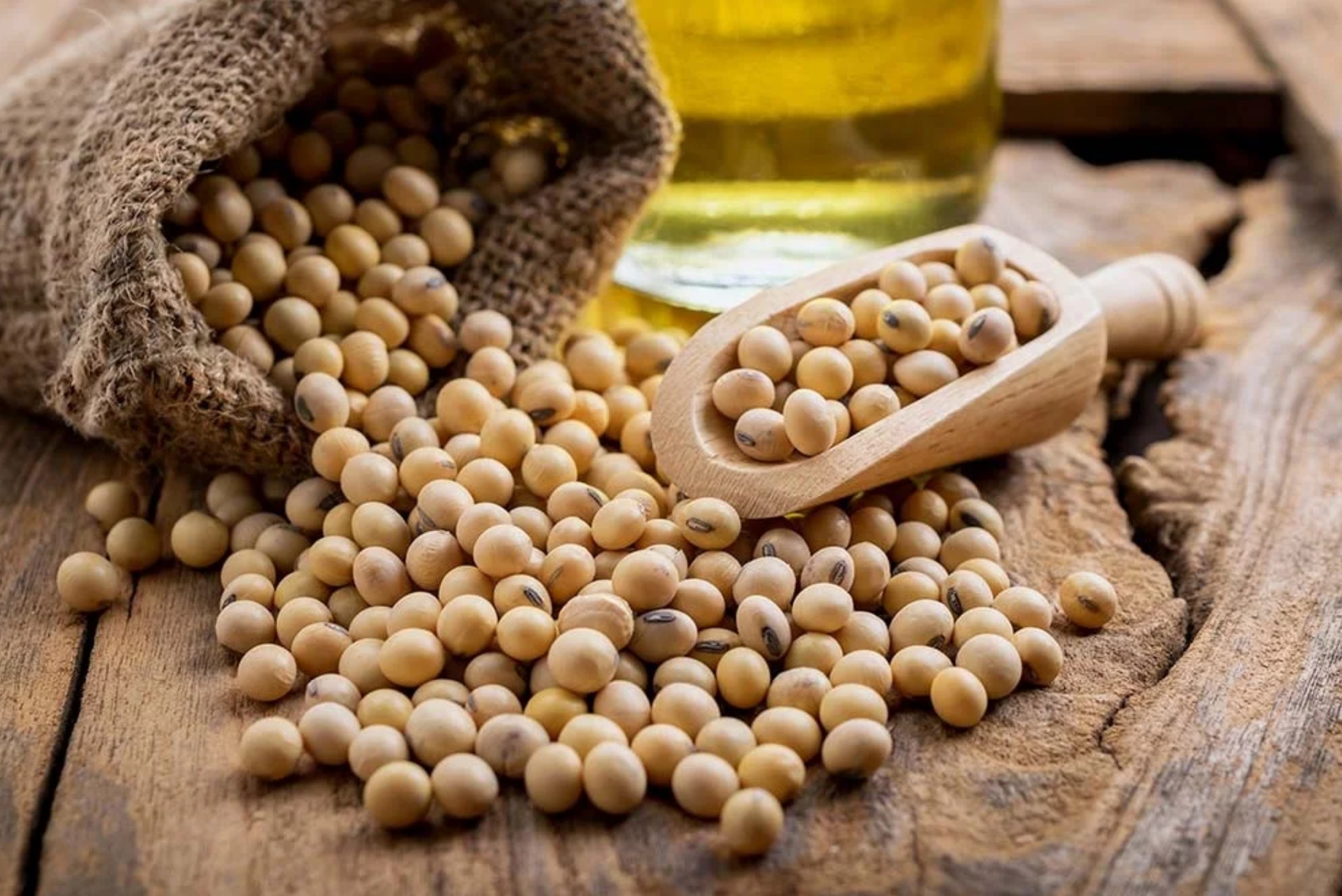Roundup Ready® soybean (Roundup Ready® GM soybean, RR soybean, GMO soybean, glyphosate soybean, glyphosate-tolerant soybean) is a genetically modified soybean whose DNA has been modified by genetic engineering so that soybean plants can to tolerate exposure glyphosate herbicide (active ingredient in the herbicide Monsanto Roundup®) throughout the growing season.
Such soybeans are also known as “glyphosate tolerant” soybeans or “transgenic soybeans”.
GMO genetically glyphosate tolerant soybean was created and patented by Monsanto.
Worldwide, GMO soybeans (Roundup Ready® GM soybeans) account for 75% of total soybean production (in 2011). And GMO soybeans production volumes are growing from year to year.
There are no official statistics on the market of GMO soybeans in Ukraine, but according to an expert estimation from Agricultural Consulting, GMO soybeans occupy 60-80% of the soybean market in Ukraine.
The technology of growing GMO soybeans under Roundup® (glyphosate)
The technology for growing of Roundup Ready® soybeans, with the exception of weed control using glyphosate and methods for preventing glyphosate-resistant weeds and their control, is very similar to the technology for growing ordinary soybeans, but there are very important and significant differences that we will discuss in this article.
The modern technology for growing of Roundup Ready® soybeans includes meeting all agronomic requirements for such critical technological aspects: soybean requirements for soil and irrigation conditions, soybean climate requirements, previous and next crops and placing soybeans in crop rotation, controlling weeds that resistant to roundup or that have multi-resistance, using additional herbicides, preparing soil for soybeans, planting soybeans, the correct depth of soybean sowing, caring for soybean fields, application of soybean herbicides, soil treatment systems (classic, No-Till, cover crops and Strip-Till), fertilizer soybean, pre-sowing soil treatment for soybean, inoculation of soybean seeds before sowing, a system for protecting soybeans from diseases, nematodes, pests, soybean harvesting, labor safety, and more.
Photo © Dr. Oleksii Orlov
A good variety of Roundup Ready® soybeans after double spraying with Roundup® - the condition of the plants is excellent, weeds are absent. Spraying was carried out against small weeds twice with a rate of 2 L / ha (28 US fluid ounce per acre) of the preparation (360 g / L of glyphosate, isopropylamine salt) for one spraying. In the structure of sown areas in Ukraine, GMO soybeans occupy 60-80%. Growing GMO soy is not prohibited in Ukraine. And this culture has very great prospects in Ukraine (12 of June 2018)
Roundup Ready® soybeans field spraying by the Hagie STS12 self-propelled sprayer
It is recommended that you use only the original Roundup® or original containing glyphosate preparations from international chemical companies and only buy them from their certified distributors. Chinese generics not recommended.
When spraying soybeans of Roundup® (glyphosate-only herbicide)?
Weeds can affect to soybean yield by means of competition for nutrients, light and water. The time in the growing season when soybean yield potential begins to be affected by weeds is called the critical period for spraying. Time of coming of this period vary depending by weed species, energy of weeds growing and density, time of weed emergence in relation with soybean emergence and growing stage, environmental conditions, and production technology practices.
Roundup® brand is a glyphosate herbicides should be applied in only Roundup Ready®, Roundup Ready 2 Yield®, and Roundup Ready 2 Xtend® soybeans varieties.
Typical time of application must be from when weeds are 10 cm (4 inches) or less in height for control prior to the critical period. This herbicide application kill weeds and to help protect soybean yield and maximize profitability of soybean production.
Where preemergence herbicides were applied at planting time, the critical period and time of Roundup® spraying is generally delayed to later in the season when postemergence herbicide already not will control weeds.
Postemergence applications (spraying) of Roundup® brand glyphosate herbicides can be made from soybean emergence (cracking) through flowering R2 stage.
Time of postemergence Roundup® herbicide applications in soybean and phase of soybean plants development for Roundup® application
Time of glyphosate-only herbicide (Roundup®) spraying for soybean:
-
Glyphosate (Roundup®) can be used to spray fields after harvesting the previous crop in the preceding season. In this case, it is better to correctly calculate the use of plant protection agents and use a tank mixture of herbicides to prevent the emergence of resistant weeds
-
Glyphosate (Roundup®) can be used on soybeans field before seedling (soybean emergence / cracking)
Roundup® spraying before soybean seedlings (soybean emergence / cracking) in USA. Glyphosate in the field where soybean will be grown can also be used after harvesting the previous crop, in the season preceding soybean planting - after the germination of perennial weeds
-
If resistant weeds absent and there are of root shoots weeds and rhizome weeds in the field, it is possible not spray of soil (preemergent) herbicide. In this case need waiting for of appearance of perennial cereals weeds (for example, couch grass Elytrígia répens) to a height of 10-15 cm (6-12 inches) and before a well-developed leaf rosette of perennial broad-leaved weeds (for example, field milk thistle Sonchus arvense or thistle Cirsium arvense). And after it - drilling Roundup Ready® soybeans. And 3-4 days after sowing, (before soybean emergence), spray of field with glyphosate (Roundup®)
-
Some farmers spray glyphosate (Roundup®) and after it sowing the Roundup Ready® soybeans. But spraying immediately after sowing is usually more effective if not using cover crops and weeds have not significant grows, especially in time of No-Till and Strip-Till
-
Glyphosate (Roundup®) can be used in the system of using cover crops and No-Till / Strip-Till in soybean cultivation
-
When using cover crops and Strip-Till, glyphosate (Roundup®) spraying is used to desiccate winter rye in spring. It is necessary to desiccate winter rye in spring, when rye plants have a height of 15 to 30 cm, and grow actively or in the period of about two weeks before soybean sowing, whichever comes first
-
The optimal time for glyphosate (Roundup®) spraying after soybean seedlings already appeared and may vary depending on existing weed species and weeds growth stages
-
Glyphosate (Roundup®) can be sprayed to soybeans no later than the growth stage R2 (full bloom), and only in accordance with the recommendations and labels information of the glyphosate manufacturer
-
The effectiveness of glyphosate (Roundup®) on soybean depends on the dosage, the timing of its use and the stages of weeds development. To effectively control weeds when growing Roundup® tolerant soybeans, glyphosates should be applied after most weeds have already germinated
-
Glyphosate residues do not control weeds growth. Glyphosate (Roundup®), sprayed at the beginning of the growing season, will fight weeds that have already sprouted, but weeds that have germinated after its application will not fall under its action.
-
Late use of glyphosate / Roundup® (before the leaves are closed the rows) will kill most weeds, but too long a delay in application may cause some weeds to grow too strong to be controlled even with large doses of glyphosate (Roundup®)
-
Thus, the elimination of late weeds waves sometimes requires the repeated use of glyphosate (Roundup®)
What are the features and rates of glyphosate-only (Roundup®) application on Roundup Ready® soybeans?
In general rates for apply Roundup® glyphosate-only herbicides for one spraying:
-
at 32 fl oz per acre (2,34 L/ha) in soybeans before weeds exceed 4 inches in height (10 cm)
-
If the application is delayed and weeds are larger or dense populations, need apply a higher rate, up to 44 fl oz per acre (3,2 L/ha). Perennial weeds should be allowed to grow to at least 6 inches (15,2 cm) before spraying for best results.
Rates for spray of Roundup® glyphosate-only herbicides depends also from size of sensitive weeds:
-
4 to 12 inches or less (10 - 30,5 cm) - 32 fl oz/acre (2,34 L/ha)
-
> 12 inches (> 30,5 cm) - 44 fl oz/acre (3,2 L/ha)
For obtain high-quality and healthy soybean seeds, you cannot planting Roundup Ready® soybean for several years on the same field, as this leads to a significant decrease of yield and profitability of soybean production due to the diseases pressure (for example, white mould Sclerotinia sclerotiorum) and other infections and it also leads to glyphosate resistant weeds
-
In the case of a large number of weeds or in the case of glyphosate-resistant weeds: ragweed (Ambrosia artemisiifolia L.), Amaranthus weeds, lamb's quarters (Chenopodium album), etc. - you can make a good soil herbicide (in this case, glyphosate is used as an insurance herbicide)
-
After sowing if not using No-Till of Strip-Till need immediately made of rolling up of field for soil compaction reverse. For it usually using the soil field rollers (cultivating rollers) to improve the contact of seeds with the soil and improve the conditions for seeds germination and increase their field germination. But this is not necessary if using good planter or special planter for No-Till / Strip-Till
-
After the emergence of seedlings, spray the soybean plants with potassium humate (1-2 L of gumate + 3-4 kg of urea per 200-300 L/ha (21,4-32,0 gal per acre), chelated fertilizers can be used, not urea. In this case need use label information of each preparation
-
In a phase of 3-6 true leaf, the crops are sprayed with a tank mixture: preparation (360 g / L of glyphosate, isopropylamine salt) 2 L / ha (28 US fl.oz./acre) + 1 L/ha (14 US fl.oz./acre) gumate to relieve stress from the application of the herbicide). In this case need use label information of each preparation
-
The use of fertilizers and glyphosate (Roundup®) in one tank mix is not recommended
-
After this, after a few days, you can treat 1 lifter of humate + insecticide (fungicide) + 3-4 kg/ha of urea (or other fertilizer) per 200-300 litres of water per ha. In this case need use label information of each preparation
-
Insecticides and fungicides are applied depending on the presence of pests and diseases or prophylactic. In this case need use label information of each preparation
-
With a large number of weeds, before closing the rows, a second glyphosate spraying is carried out with a tank mixture: preparation (360 g / L of glyphosate, isopropylamine salt) 2 L / ha (28 US fl.oz./acre) + 1 L/ha (14 US fl.oz./acre) gumate. In this case need use label information of each preparation
-
In the period of biomass growing - a complex micronutrient for legumes + micronutrient fertilizers + Boron + Molybdenum + insecticide (fungicide) + 3-4 kg/ha of urea per 200-300 L of water per ha. Boron must be used, because it helps to form an ovary of beans for 15-25% of flowers in addition. In this case need use label information of each preparation
-
At the stage of bean formation - 1-2 L/ha of humate + 3-4 kg/ha of urea per 200-300 L of water per ha + if necessary + insecticide (fungicide). In this case need use label information of each preparation
-
If soybeans suffer from high temperatures and drought, then stress relievers + gumate can be used to relieve stress from the heat (special technology). In this case need use label information of each preparation
-
For protection against pests: Acari, thrips, Noctuidae, Pyralidae, aphids, etc. - apply appropriate insecticides and acaricides as necessary or prophylactic. In this case need use label information of each preparation
-
If Roundup Ready® soybeans are grown on chernozems black soils, the application of humates may not pay off, since such soils contain a high amount of humid acids
-
To spray with chelated fertilizers, it is necessary only on the basis of soil and plants analyzes. In this case need use label information of each preparation
-
For the correct calculation of Roundup Ready® soybean cultivation technology, and crop control, you can use agronomic support services from Agricultural Consulting, this will allow you to get high additional profit and increase work efficiency
Since there are a lot of glyphosate-based preparations and they differ in glyphosate concentration, formulation and potency, before applying these preparations to soybeans, it is necessary to consult about their regalement of use with the manufacturer of preparation.
Also, various varieties in many countries of Roundup Ready® soybeans are distinguished by their level of resistance to glyphosates.
Some weeds are resistant and not destroyed by glyphosate, some require a significantly higher rate
Glyphosates cannot be used on ordinary soybean varieties, as this leads to the complete death of crops!
-----------------------------





